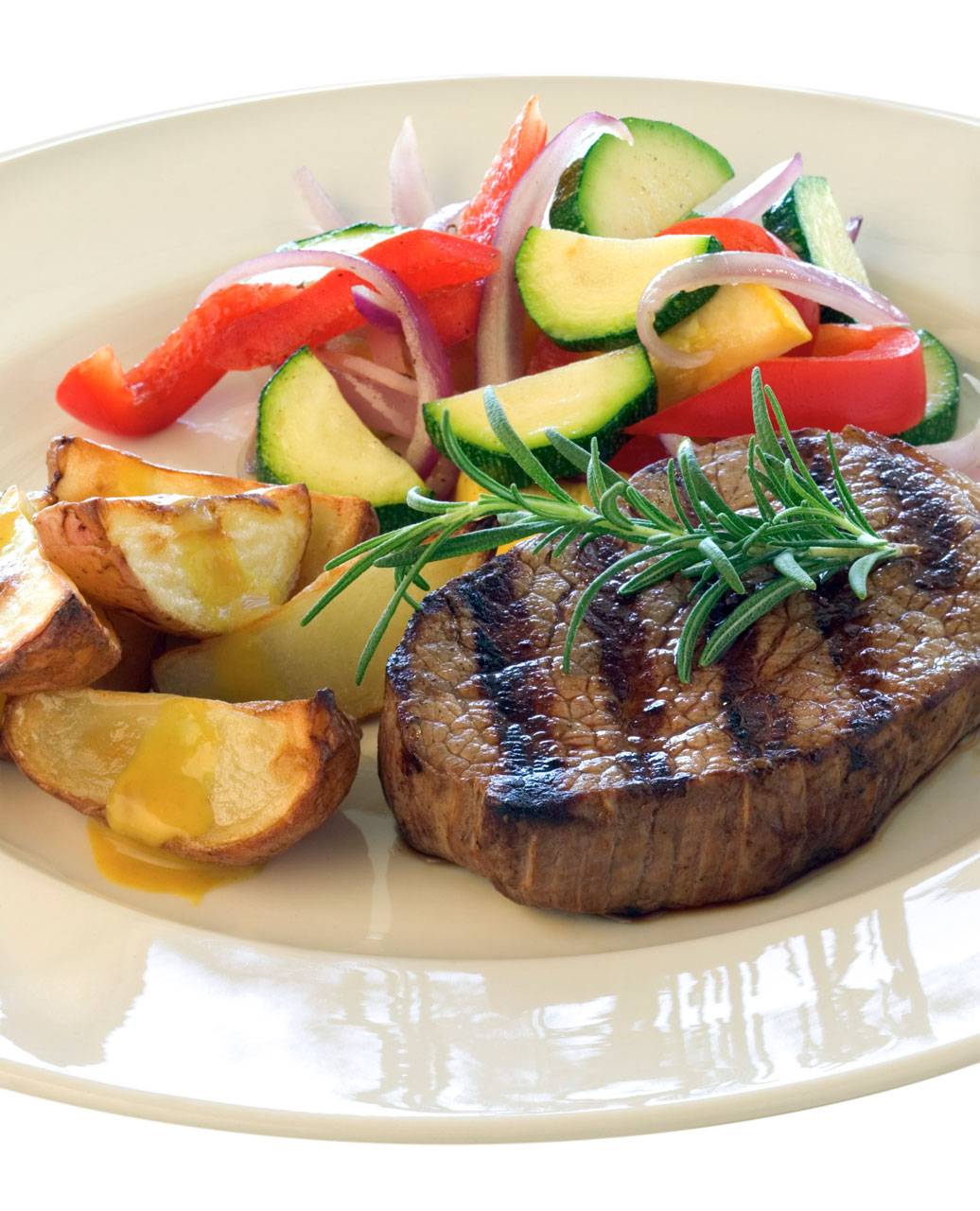Don't be Afraid of (100% Grass-Fed) Red Meat
In my latest information newsletter to a local CSA I wrote about the stark differences between beef finished on corn or grain versus those only finished on pasture.
Grass-fed or pasture-raised beef (look for grass-finished or 100% grass-fed label in grocery store) is practically a different animal in comparison with conventional-raised beef. Nutritionally, grass-fed beef has more in common with elk, buffalo, or venison than a corn-fed steer. A steak of grass-finished beef is not only lower in total fat and calories (less than skinless chicken thigh) but also has 2-6 times the amount of Omega 3's, 3-5 times the amount of CLA, low saturated fat and higher vitamin and minerals in comparison with grain-fed beef (Data from J. Animal Sci 80(5):1202-11 @ www.eatwild.com).
CLA or Conjugated Linoleic Acid is a healthy fat that is found most abundantly in meat and dairy. Just 0.1% of CLA out of total calories was found to be a potent inhibitor in tumor growth. Therefore just 1 serving of pasture-raised meat, dairy or cheese would give you an adequate daily amount versus 5 servings of conventional dairy and meat products. Grass-fed beef is also higher Vitamin E, B-vitamins, calcium, magnesium, potassium, beta-carotene and Vitamin C. Even though feedlot cattle are supplemented with Vitamin E, grass-fed beef still has 4 times the amount of Vitamin E in comparison with their grain-fed cousins.
All cattle are grazed on grass for a good part of their lives but when the steers are shipped to the feedlots and start eating corn diets (which gives them increased fat marbling) they instantly start to lose their healthy proportions of Omega 3's. Steers are usually fattened up for 90 days or longer in the feedlots before they are slaughtered. This is just enough time to cut the Omega 3's to only about 0.5% or less of the fat content. Grass-fed meat also has a healthy ratio of Omega 3's to Omega 6's. This helps reduce chronic inflammation that can lead to diseases such as diabetes, cardiovascular disease, autoimmune disorders and cancer. Omega 6 is an essential fatty acid but it is inflammatory in high amounts. A healthy ratio is typically 1 part Omega 3 to every 1-4 parts Omega 6 or 1:1-1:4. The average American consumes a ratio closer towards 1:25. Depending how long the steer was kept at the feedlot, those who eat grain-fed beef will be consuming an Omega 3 to 6 ratio of 1:11 or 1:20!
Poor lipid profiles are promoted on a grain-fed beef diet and many will have high LDL's (bad cholesterol), total dietary cholesterol and low HDL's (good cholesterol) which leads to heart disease, which kills the most Americans per year. A recent study just came out declaring all red and processed meats should be avoided as they shave years off of your life. This is no surprise as they only studied conventionally raised beef! The nutritional content of grass-fed beef is so high quality it can be used interchangeably with skinless chicken and fish in the diets of those trying to lower their dietary cholesterol levels and improve their lipid profiles.Some may be concerned about the taste of the grass-finished versus corn-finished beef. A rule of thumb for grass-finished beef is to cook it 'low and slow' as the lower fat content can cause it to overcook quickly. Studies have shown that regardless of how the steer was raised, tenderness and juiciness were indistinguishable.
If you haven't heard of E. Coli O157:H7 then I regret to inform you that this is another antibiotic-resistant bacteria that is found most commonly in feedlot beef. It is responsible for many cases of severe food poisoning leading to hemorrhagic colitis and most deaths revolving around E.Coli. Feedlots are notoriously known for the propagation of this superbug. Even though the cattle most likely didn't have it in their intestinal track before they arrived at the feedlot, within their time there it will eventually take over their intestinal track. This is no surprise as the steers experience high stress, close-quartered lots with thousands of others, standing in feces and eating an inflammatory diet to boot. Not only has E.Coli O157:H7 been found to survive better in a feedlot cattle feces versus a grass-fed steer's feces, but they have a higher ability to adhere to our own intestinal epithelium as well. There is no risk of Mad Cow Disease either with grass-fed beef since pastured cattle only eat grass.
If you are a vegan or vegetarian for humane reasons, but you still are craving meat, then you should look no further than your local farmer. Most of them use small, nearby processing facilities to accomodate their needs and are more than happy to let you question them about the process and visit the facility itself if you want. Make sure to ask them how they try to keep the stress minimal to the steer when they are going through the process. Pastured steers in general have longer lives as it takes more days to finish them on top of avoiding the high stress of being in a feedlot.The value of your money is quadrupled when you feed your family 100% grass-fed beef. Not only can you actually obtain health benefits from eating this nutritionally superior product but in addition, you are supporting your local community, eco-friendly farming practices and humane animal treatment.
Sources
http://www.biomedcentral.com/content/pdf/1475-2891-9-10.pdf
http://www.nytimes.com/2002/03/31/magazine/power-steer.html?pagewanted=all&src=pmhttp://www.texasjbardranch.com/Grass-fedBeefProductsNutrients.pdf
http://aem.asm.org/content/75/18/5927.short
http://jas.fass.org/content/57/4/791.short
http://www.eatwild.com/healthbenefits.htm#2
http://aem.asm.org/content/75/18/5927.short
http://www.weightymatters.ca/2012/03/what-reading-that-red-meat-and-die.html









